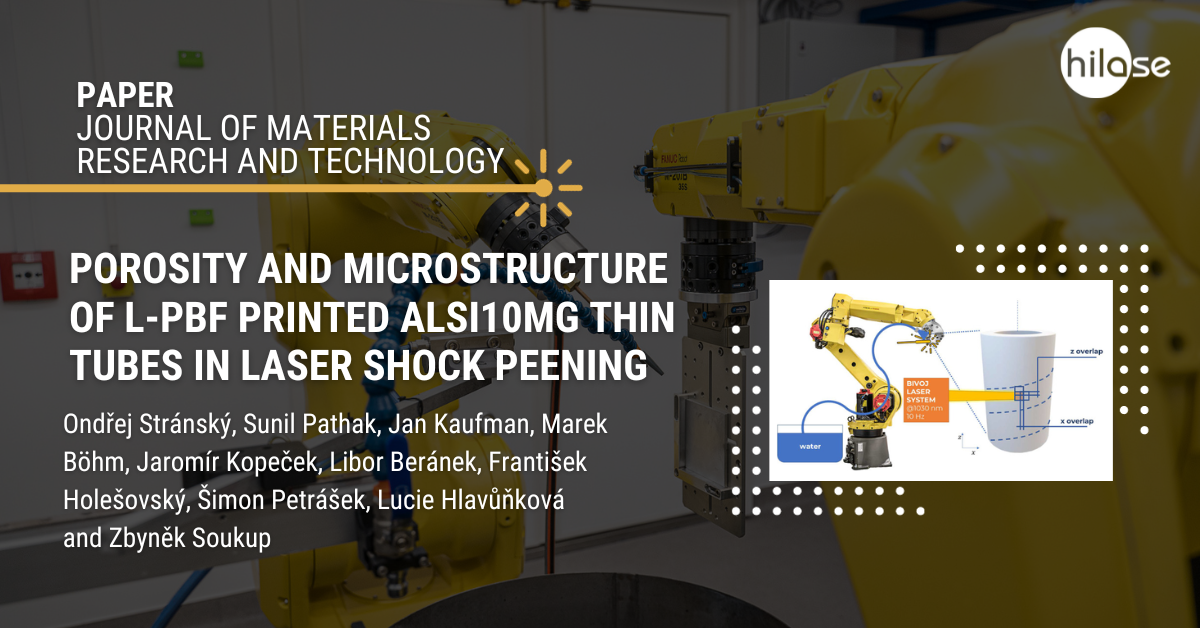Read a new article by HiLASIANS Ondřej Stránský, Sunil Pathak, Jan Kaufman, and Marek Böhm from the Laser Shock Peening (LSP) team, on the topic of Porosity and Microstructure of L-PBF printed AlSi10Mg thin tubes in Laser Shock Peening.
They collaborated on this study published in the Journal of Materials Research and Technology with colleagues from the Institute of Physics of the CAS: Jaromír Kopeček and Libor Beránek; František Holešovský, Šimon Petrášek, Lucie Hlavůňková and Zbyněk Soukup from the Faculty of Mechanical Engineering, Czech Technical University in Prague.

Laser powder bed fusion (L-PBF) has emerged as one of the most promising technologies for producing complex geometries that are difficult to achieve with other methods. However, its widespread adoption is hindered by issues such as deleterious microstructure, tensile residual stresses, and porous structure, mainly while working with aluminum alloys. To address these challenges, laser shock peening (LSP) offers a potential solution by mitigating the negative effects associated with aluminum L-PBF. This study investigates the impact of the important LSP parameters, namely energy, spot size, and overlap on L-PBF printed thin AlSi10Mg tubes. A total of 17 specimens were examined by varying the mentioned parameters at three levels each. The outcome of the study was evaluated in terms of residual stresses, porosity, microstructure, and surface roughness. The results have shown significant improvements in residual stresses, where a maximum improvement of over 200 % was observed and a decrease in porosity by 70 %. Furthermore, the microstructure analysis revealed grain refinement and dislocation redistribution as material reactions, aligning with the observed microhardness increase. These findings demonstrate the viability of LSP as a post-processing method for demanding applications, effectively addressing the limitations of the L-PBF process.








